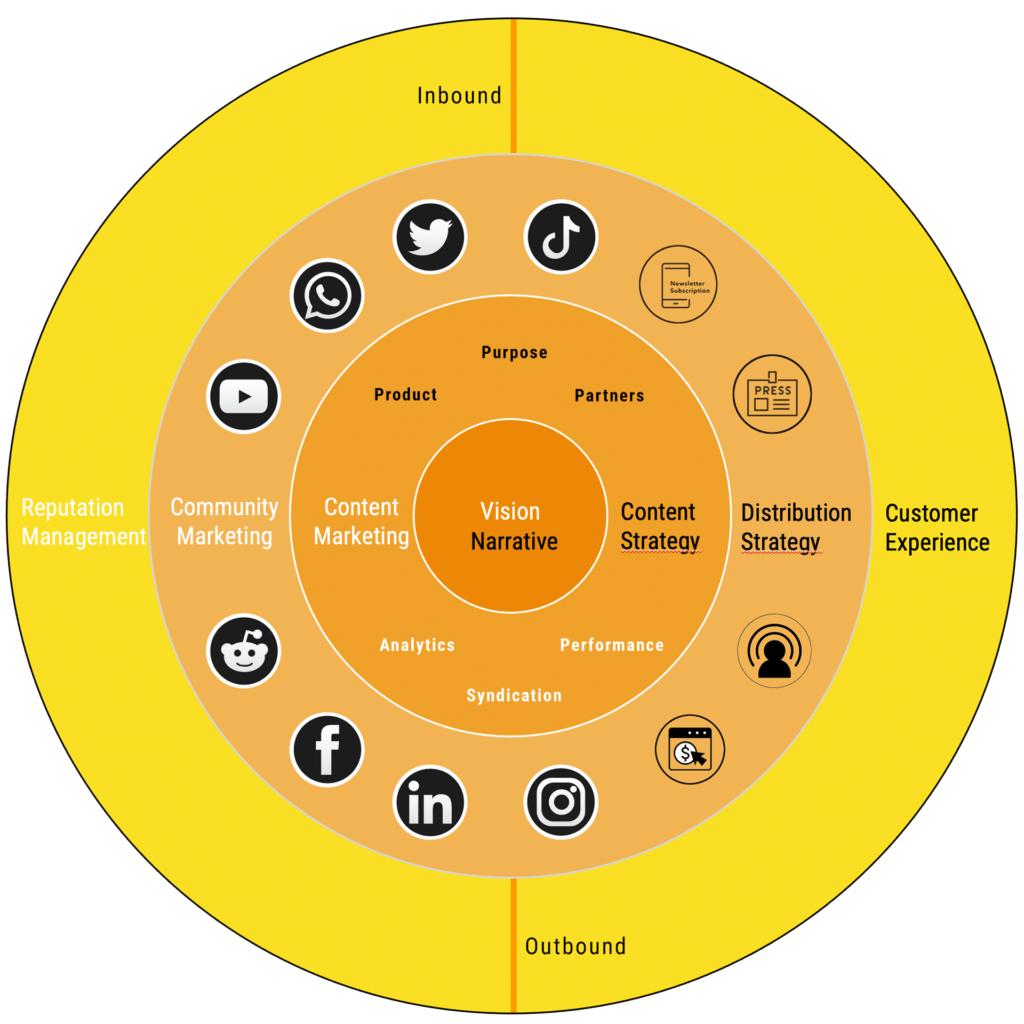Did you ever ask yourself what communication experts mean when they talk about content strategy? Well, I did. And guess what? There are a lot of very different definitions around. So I reckon it is worthwhile to share mine, too. In a nutshell, the content strategy helps increase the efficiency of your communication efforts.
First of all, a content strategy stands for the consequent translation of your overall company and communication strategy into developing the best possible narrative and storylines, which help to make your point and trigger the audience to engage in a conversation. But you cannot stop there. As a matter of fact, a consistent brand narrative and compelling storylines built on that narrative are only half the deal. The second part of it orchestrates how your messages are disseminated and to what depths you set up your monitoring and evaluation apparatus.
Content strategy is an integrated set of user-centered, goal-driven choices about content throughout its lifecycle.
Kristina Halvorson, US-Author
In prehistoric times, this part included what we called “clippings” at that time. Meaning, we looked at the newspapers and magazines for bits and pieces that referred to our company. But that was it, more or less. Fortunately, digitalization has provided us with more sophisticated tools. Understanding your share of voice in public media is still an important indicator. However, we are now capable of going much deeper into it and coming back with data that helps optimise our communication channels, our distribution planning, and the quality of our content. To be honest, communication analytics have come a long way, and I am a fan!
When you start developing a content strategy, here are a couple of aspects you should consider:
- Audience: Knowing your audience and paying respect to the differences in demographics, preferences, behaviours, and needs is crucial for creating content that resonates with them.
- Objectives: Setting goals and key performance indicators (KPIs) helps to keep on track. Think about objectives like increasing brand awareness, driving website traffic, or generating engagement and maybe even leads.
- Content: Develop a plan for relevant, valuable, high-quality content across your internal and external channels of choice. Make sure you have a budget for content creation—or at least a team capable of taking on that responsibility.
- Channel Selection: Make sure your designated communication channels are capable of delivering the desired results. And do not forget that clever internal communication can have a massive impact on external communication, too.
- Consistent Messaging: The audience may vary, but the tone of your messaging needs to be consistent, recognisable, in tone and style aligned with the brand’s identity, and resonate with the various target audiences. Make use of a proper feedback loop based on performance measurements.
- Paid Promotion and Ads: With regards to the different communication targets, you need to implement strategies for effectively promoting and amplifying content to maximise its reach and impact. Make sure you have a budget for that, too.
- Performance Management: Key performance indicators (KPIs) help to improve your work. This is not about rectifying what you do but about delivering proof of the impact you are able to create. Embrace analytics with great respect. It helps to make your point when you ask for more media dollars.
In short, a well-thought-through and robust content strategy serves as a framework that enables the corporate communication team to deliver on their objectives, which in turn support the overall goals of the organisation and more often than not create synergy between the communication needs of the various branches of your organisation. The content strategy is of the essence to increase the efficiency of your communication efforts.
